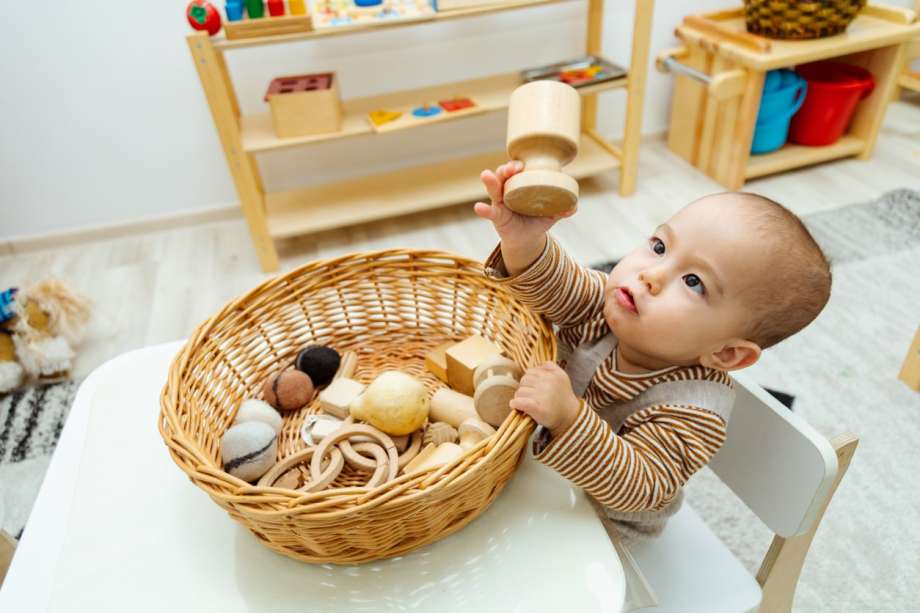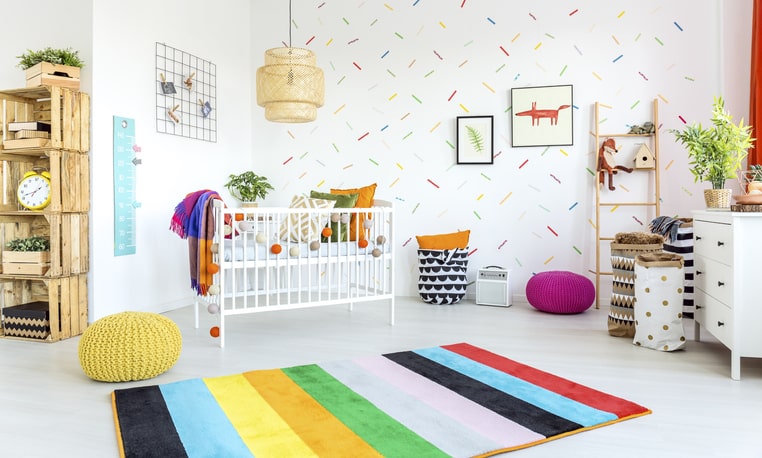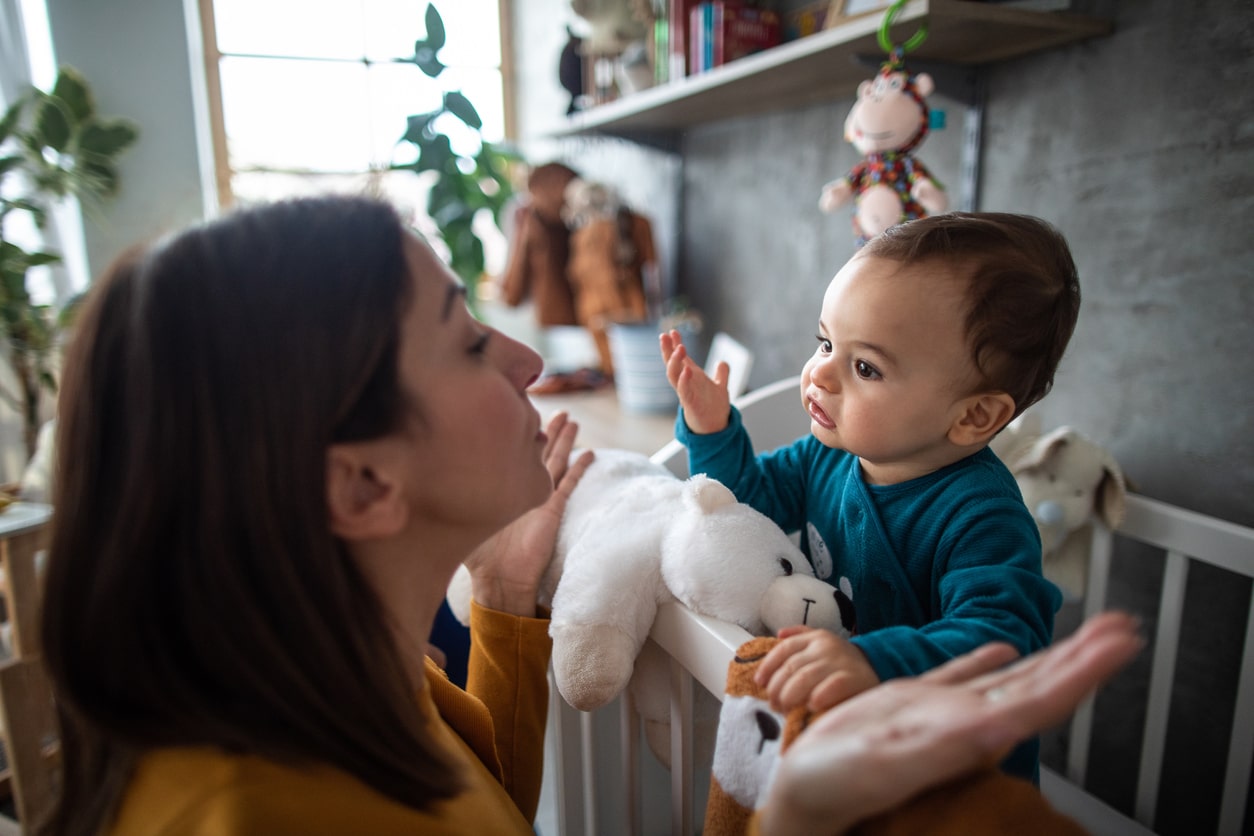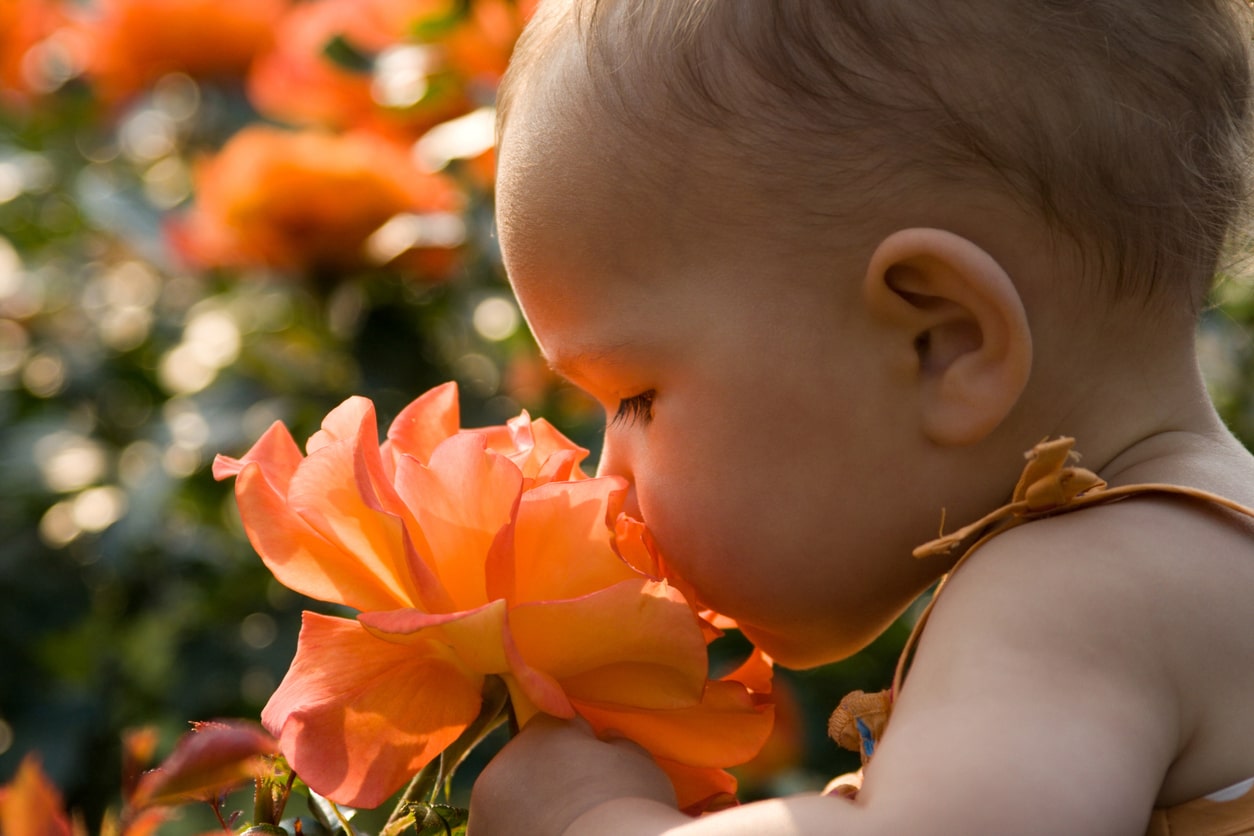Infant Sensory Capabilities: A Comprehensive Guide

Babies are born with all five senses intact. These senses are sight, hearing, taste, smell, and touch. However, it takes time for these to develop to their full abilities. Keep reading to learn more about newborn senses and how you can support their development.
Related: When Do Babies Hold Their Head Up? (Stages of Control)
What Are the Areas of Sensory Development for Infants?
There are many things you can do to support your baby’s sensory development both in their first few days and weeks of life, and beyond. Below, we have listed the different senses, their normal development, and things you can do to support your baby’s sensory development and motor skills.
-
Vision or Eyesight
Babies can open their eyes and see at birth, but their visual acuity is not well developed, and the ability to focus and see well is limited to about 12 inches. Particularly during the first week of life, your baby will have limited vision.
As their eyesight develops, your baby may struggle with depth perception and can focus best on objects that are 7 to 12 inches away from her eyes. Conveniently, this distance is approximately the distance from your face to your baby when you hold them in your arms! to your face when you hold your baby in your arms.
What is a Newborn’s Eyesight Like?
The most important development of vision occurs from 0 to 4 months.
Within weeks, the range of your baby’s sight will expand. Even though he or she can now see objects that are farther away, the baby will probably show interest-through facial expressions or coos and gurgles only in those objects that remain close.
Most babies can also distinguish between various patterns and shapes. Although they may not be able to make out all of the subtle features of the human face, most babies nonetheless like to look at faces more than any other pattern or shape.
Visual Stimulation to Develop Baby’s Eyesight
Making Different Facial Expressions
Engaging often with your baby and changing your facial expression is an excellent way to encourage cognitive development. Take advantage of your baby's visual preference: Make eye contact often and smile at your baby. She will return the eye contact almost immediately-and in time, she will return the smile, too.
Decorate Baby’s Room with Bold, Contrasting Colors

Because newborns best perceive sharply contrasting patterns of light and darkness, the pastel pinks and blues traditionally used to decorate a baby's nursery have little benefit for your baby-at least in her first weeks.
Many articles on picking baby decor may recommend bold colors with sharp contrast due to their limited vision. Because your baby might like pastels later, feel free to decorate the baby’s space in such colors even though he or she can't see them right away.
To help keep your baby visually engaged, add touches that offer sharp contrasts: a black-and-white mobile hanging over the crib, a checkerboard, or other black-and-white patterns on the wall next to the changing table, black-and-white toys, or stuffed animals. The infant’s caregiver may also choose to wear clothes or glasses that present the baby with a sharply contrasting pattern to study.
Play Peekaboo to Help Track Eye Movement
Most babies also have a limited ability to track the movement of objects with their heads and eyes or with their eyes alone. Babies can track movement only for a short distance and only if the objects move slowly.
Games such as peekaboo make little sense at this age. If you aren't in the direct line of your baby's sight, you are for all intents and purposes gone. Even if you just hide your face behind your hands, your baby no longer knows you're there. As your baby grows, their eyesight will continue to improve. By early childhood, your child should have normal 20/20 eyesight.
-
Hearing
Your baby’s sense of hearing is fully developed at birth. Most babies have a sensitive sense of hearing, and they pay careful attention to the noises in their world. During pregnancy, some parents notice the baby jumps or kicks in response to a loud sound.
Shortly after birth, you may notice your newborn baby having a visible startle reaction to a loud sound. Your baby can also distinguish among a wide variety of different sounds.
Stimulating Infant Hearing Development
Babies can track sounds, just as they can track moving objects. Within several weeks of birth, you may see evidence of your baby’s hearing as they may begin to look toward the source of a voice or loud noises-a remarkably early coordination of the senses of sight and hearing.
Hearing is important to your baby’s health and normal sensory development. If your baby is born in the US, your baby will have a hearing screen after birth to aid in early identification of hearing loss.
Play Rhymic, Repetitive Sounds
Your baby will probably like repetitive, rhythmic sounds that mimic the sound of vibrations or the heartbeat that he heard while he was still in the womb. Tapes of heart sounds, the beating of a tom-tom or other drum, and the loud hum of a vacuum cleaner will all be music to your baby's ears.

Keep Talking with and Near Your Baby
Like most newborns, babies show a particular fondness for human voices in preference to other sounds. Shortly after birth, your baby may try to turn to look when they hear you speak. Talking softly to your baby will stimulate the sense of hearing in a way he or she will enjoy, and carrying on conversations with your baby is an important part of language development.
-
Taste
Taste is another important sense. While your baby’s sense of taste is present at birth (and before!), this sense does not cross most caregivers’ minds until the baby is a bit older.
Conventional wisdom and old wives’ tales tell us that young infants prefer sweet tastes and that introducing sweet foods like fruits before veggies when the baby starts on solid foods may teach the baby to only want sweets.
However, breast milk is naturally sweet and if your baby has been fed breast milk, they are already accustomed to sweeter flavors in their food. Some babies who drink breast milk may not like the taste of formula, as they are familiar with the sweetness of human milk.
Introducing age-appropriate solids in a range of flavors will help keep your baby’s taste buds engaged and expand their interest in a variety of foods. Don’t worry if the baby initially doesn’t like the new food - on average it takes several exposures for your baby to learn to like a new flavor.
-
Smell

Newborn babies are born with an acute sense of smell, as the olfactory (smell) sense develops pretty early in pregnancy. One of the earliest instincts of a newborn baby laid directly on a parent’s chest is to try to move towards the smell of a breast or breast milk.
This instinct is strong, and babies may attempt to “root” (search for a breast) even if the parent isn’t breastfeeding. Babies quickly develop a preference for the scent of their own parents and are good at identifying their parents based on smell alone.
-
Touch
Newborns have a well-developed sense of touch and need to be held and touched frequently to aid in normal development. Initially after birth, they may startle and have uncoordinated movements. Babies are used to feeling the snug confinement of the uterine walls, and having sudden freedom to move their arms and legs can be jarring.
Swaddling, cuddling, and hugging a newborn baby helps calm them and makes them feel secure. In the first year, it is especially important to hold your baby during feeds, as these stimuli can aid in development.
Why Parents Need to Encourage Infant Sensory Development
It is important to know that while your baby is born with all of their senses, it will take time for them to develop fully. You can encourage sensory development in your child by holding them, playing with them, and singing and talking to them.
Other methods such as infant massage and taking your baby outside for walks can help engage their senses fully and provide new stimulation for all of their senses. Babies learn well by imitation, and having you model these behaviors for them will help them hit their development milestones.
As your baby gets older, you can help them with child development milestones by exposing them to a wide variety of foods and play experiences to help aid their growth.
Get our Baby Development Chart to track your baby’s development milestones!

